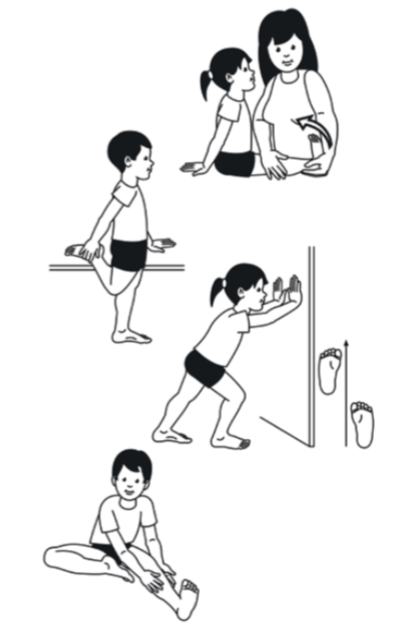
Make your child comfortable and try to help them to not worry about growing pains. Symptoms of growing pains.

Plenty of cuddles and reassurance that the pain will go away and that their legs will feel normal by morning.
What helps growing pains. Growing pains are usually harmless pains that children outgrow. Massaging stretching and over-the-counter pain-relieving medications are the best way to ease your childs pain. What are growing pains.
The term growing pains refers to a benign not dangerous pattern of pain in the limbs. This pain usually occurs in children aged 2 to 12. These pains are the most common type of limb pain in children.
Between 10 and 35 of children will have these pains at least once. These pains occur in both boys and girls but slightly more common in girls. Another way to relieve growing pains is to use a heating pad.
Just like a warm bath heat from a heating pad or a homemade rice heat pack helps soothe and relax muscle tension. Place a heat pack on a low setting on a childs legs as they fall asleep. Most of the time growing pains do not require professional medical treatment.
Below are some home remedies that a person can use to alleviate a childs symptoms. Make your child comfortable and try to help them to not worry about growing pains. Give them lots of cuddles and reassurance that growing pains wont hurt anymore in the morning and that theyll stop happening soon.
Gently massaging the area and using heat treatments like a warm bath or warm heat pack might ease growing pains. One of the most well-known ways all over the world that helps with pain is yoga. Yoga is great for growing pains since it helps strengthen the muscles in their legs.
The stretches will help them feel better since the sharp tense muscles are relaxed through the different poses. Some research studies have considered whether growing pains might have a relation to vitamin D levels. If a child has low vitamin D levels vitamin D supplements seem to help with growing pains.
Many children with growing pains have normal vitamin D levels however. Growing pains do not develop into anything serious and do not do the child any harm. Your parent can help your growing pains feel better by giving you an over-the-counter pain medicine like acetaminophen or ibuprofen.
Kids should not take aspirin because it can cause a rare but serious illness called Reye syndrome. Treatment for growing pains Always see your doctor to make sure that there is no other cause of pain. Things that may help your child manage the pain include.
Plenty of cuddles and reassurance that the pain will go away and that their legs will feel normal by morning. For these children growing pains might be related to stress or anxiety. Symptoms of growing pains.
If your child has growing pains they might say they have an aching or a burning sensation in both legs in the muscles of the thighs calves or feet. The pains can also happen in the arms or other parts of the body although this is much less. Growing pains are common in children mainly in the legs.
Theyre harmless but can be very painful. They usually stop by around age 12. Check if its growing pains.
Growing pains can come and go over months even years. The pain is usually. An aching or throbbing in both legs.
In the muscles not the joints. Because vitamin B6 helps transport magnesium into the cells and growing pains in children have been linked to a B6 deficiency a good multi-vitamin or diet may help. A 2015 study indicates that there is a correlation between vitamin D deficiency and growing pains as well so ensuring your child has adequate vitamin D levels is important to ward off growing pains.
If pains suddenly occur at these later ages it is not caused by growing pains. Some children diagnosed with growing pains meet diagnostic criteria for Restless Leg Syndrome and a family history of RLS is common in these children. In some cases symptoms are.